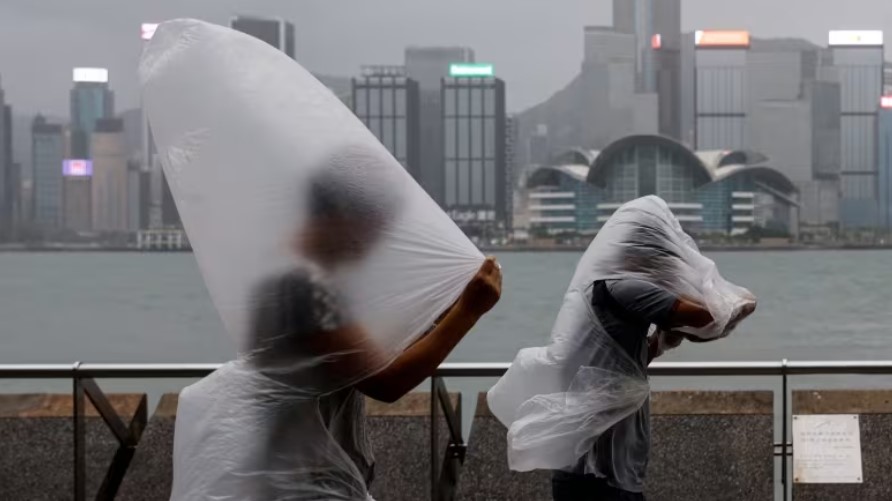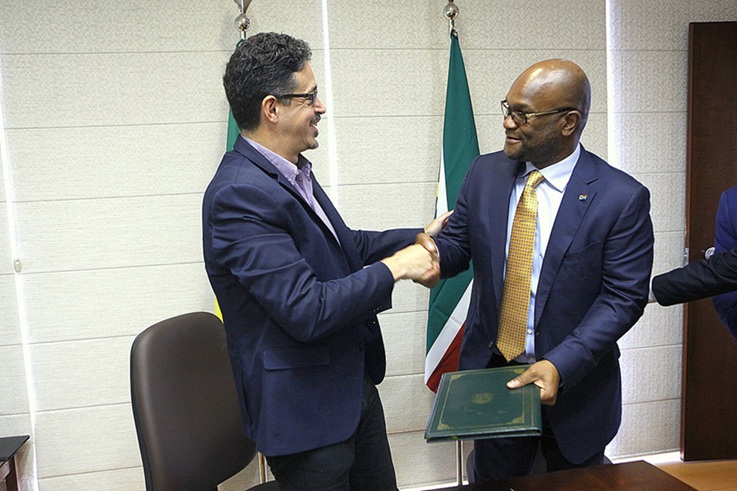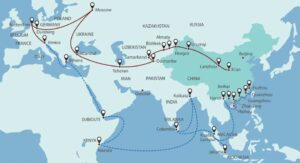On a fateful Friday, a powerful Typhoon named Saola wreaked havoc across Hong Kong and parts of southern China, causing widespread disruption. The region came to a virtual standstill, as the tempestuous weather led to the cancellation of classes and flights. Many residents opted to stay home, and students in various cities had their school year delayed by a week. Hong Kong’s bustling stock market temporarily ceased trading, and the airport saw hundreds of travelers stranded due to the cancellation of approximately 460 flights.
In mainland China, rail authorities took precautionary measures by suspending all trains entering or departing Guangdong province from Friday night until Saturday evening. The Hong Kong Observatory issued a No. 10 hurricane signal, the highest level in the city’s weather warning system, marking the first time it had been raised to this level since the Super Typhoon Mangkhut’s impact in 2018. Saola, with maximum sustained winds reaching 195 kilometers (121 miles) per hour, came perilously close to Hong Kong at around 11 p.m., passing about 30 kilometers (19 miles) south of the city’s Tsim Sha Tsui shopping district. The storm’s eyewall, a particularly dangerous part of the typhoon, swept across the city at night, posing a significant threat.
The Observatory anticipated that the typhoon’s force would gradually diminish as it moved westward along the coastline, away from Hong Kong. They issued warnings of serious flooding in coastal areas, with water levels potentially reaching the heights observed during the devastating impact of Typhoon Mangkhut. In the midst of these challenges, China had already been grappling with a series of heavy rains and deadly floods in various regions over the past few months.
As residents of Hong Kong prepared for the impending deluge of rain and strong winds, some 400 people sought refuge in temporary shelters, and ferry and bus services were halted. Residents of low-lying areas took precautions by placing sandbags at their doorsteps to ward off potential flooding. Despite the adverse conditions, some, like security guard Shirley Ng, had no choice but to continue working. Ng observed that people were stocking up on food in preparation for the storm while expressing hope that the typhoon wouldn’t result in casualties.
The neighboring gambling hub of Macao also faced the threat of flooding, with predictions of water levels rising up to 1.5 meters (5 feet) in low-lying areas. The cross-border bridge connecting Hong Kong, Macao, and Zhuhai was closed, and Macao’s leader, Ho Iat Seng, ordered the suspension of casino operations. In the technology and finance hub of Shenzhen, to the north of Hong Kong, the emergency management bureau enforced a suspension of work, business, and public transport, allowing only rescue crews to use the highways.
China’s National Meteorological Administration warned that Saola could either make landfall in coastal areas from Taishan city in Guangdong province to Shenzhen early Saturday or merely skim across these regions. Meanwhile, another storm named Haikui was gradually advancing towards eastern China, creating additional concerns. With the combined influence of Saola and Haikui, strong winds and heavy rains were predicted to impact parts of Guangdong, Fujian, and Zhejiang provinces. The meteorological administration also forecasted that Haikui would reach Taiwan’s east coast on Sunday. Saola’s journey had already taken it just south of Taiwan, where it caused torrential rain, and it had previously lashed the Philippines, leading to the displacement of tens of thousands of people due to flooding in the northern regions of the islands.
(Source: Kanis Leung |Alice Fung | Associated Press)







